We're back making cutting boards, with more new products and services coming down the pike shortly. I'll leave this up, but we're back in the shop and looking forward to getting some cutting boards out in the coming weeks.
Pete Raho - 6 Apr '16
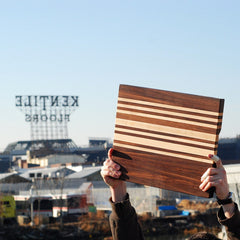
I’ve decided to park Gowanus Furniture Co. for a while. Growing this business for the last five years has been exhilarating, and I feel like I’ve learned more through it than business school and undergrad combined, but at this stage the work has become routine, and getting the business to the next level requires more resources and a different set of skills. More importantly, it hit me that at this stage, the passion is gone and I’m getting further away from the goals I had when I started. I still believe in Gowanus Furniture Co. and it will live on - albeit in a different form - but I need to put my energy towards something new, and find something that’s a similar blend of the analytical and the creative.
When I started this back in 2011 after nearly 8 years at Christie’s and business school, the plan was to “make a living making stuff.” Woodworking was a hobby, and I thought with some adjustments it could pay the bills and I could make modest living while I figured out the Next Big Thing. Of course (as is often the perception of those not actually making stuff for a living - like me at the time), I thought I’d have tons of free time and be drinking beers by 2:00pm every day.
The more I got into it, the more I realized the tremendous effort it would take, but also what it could be. I saw the whole thing as this amazing blend of design, woodworking, and systems, and it’s telling that I had the most fun with the parts of the business not related to production but to the processes behind it. The plan became to grow it large enough to have my own shop and a handful of employees with solid, well paying jobs handling production, and then I could spend my days playing with new designs and making prototypes, selling the stuff, staging photo shoots and making videos, and above all finding ways to make everything more efficient.
The first two years were unlike anything I’d ever experienced. When we were selling at the Brooklyn Flea (and eventually both Smorgasburgs too - four locations each weekend! - 2012-13), there was just no time. For anything. Ever. And the stress… It was nuts. Physically, the manual labor was demanding too - your hands ached, and wood is heavy. I was working seven days a week, but the effort paid off, and the exposure we got from the Flea was worth it and really helped me get the name out there.
During the week, we’d be in our shared space at 6:30am making stuff before it got crowded (and working through the night during the holidays), then the rest of the day spent trying to find time to photograph, ship, develop new products, design packaging, and all the work you need to do at a desk too. Email newsletters hardly ever went out. I was also teaching my cutting board making class two Fridays nights each month then selling at the Flea the next day and Sunday. While I had some help with production, selling at markets, and shipping, the rest was just me. I was doing work I should have delegated, but that can get expensive if everyone’s part time, and the hope was always that in just a couple months it would finally take off (and - the goal was, and still is, much more than cutting boards - click here to read my summary of the Big Plan - I still think it's pretty good).
 I did a lot to optimize the production of the boards. I made a lot of spreadsheets to streamline shipping and production, and they saved hours each week. I like the way these four different products are all made from the same length of material and can be glued up in the same clamps - they’re just cut to different lengths, sort of a “Taco Bell” approach. Or our most popular product, the “Kentile” Monogrammed cutting board - it’s essentially the same amount of labor whether it has a specific Morse code monogram or is just made to look pretty. Either way, we’re still gluing the same pieces of wood together - but we can charge more for the monogram. I loved finding ways to add value and drive that wedge between price and cost.
I did a lot to optimize the production of the boards. I made a lot of spreadsheets to streamline shipping and production, and they saved hours each week. I like the way these four different products are all made from the same length of material and can be glued up in the same clamps - they’re just cut to different lengths, sort of a “Taco Bell” approach. Or our most popular product, the “Kentile” Monogrammed cutting board - it’s essentially the same amount of labor whether it has a specific Morse code monogram or is just made to look pretty. Either way, we’re still gluing the same pieces of wood together - but we can charge more for the monogram. I loved finding ways to add value and drive that wedge between price and cost.
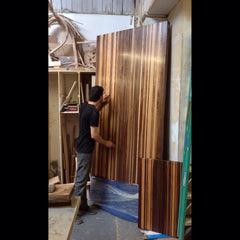 Once we stopped doing the Flea in 2014, we were well-known enough that orders kept coming in, and I started doing larger tabletops and countertops. The thing was that I could never get the sales to be where I knew they could be, and the dream of getting my own shop was growing more elusive. We were the overloaded plane bouncing down the runway, trying to take off. As far as the bigger projects, impressive as the large tabletops were, after the first, they weren’t that much fun - I didn’t want to spend my days making tabletops. Once I figured the process out, I was kind of all set, and growing a profitable tabletop business requires even more space and was further from what I imagined. The business was pretty stable, though - at last. There wasn’t much money left over, but the bills were finally paid. It was kind of working.
Once we stopped doing the Flea in 2014, we were well-known enough that orders kept coming in, and I started doing larger tabletops and countertops. The thing was that I could never get the sales to be where I knew they could be, and the dream of getting my own shop was growing more elusive. We were the overloaded plane bouncing down the runway, trying to take off. As far as the bigger projects, impressive as the large tabletops were, after the first, they weren’t that much fun - I didn’t want to spend my days making tabletops. Once I figured the process out, I was kind of all set, and growing a profitable tabletop business requires even more space and was further from what I imagined. The business was pretty stable, though - at last. There wasn’t much money left over, but the bills were finally paid. It was kind of working.
Constrained by our space and sales and not sure how to make that leap to the next level, I was spending most of my time making larger pieces, and, looking forward, I realized that this was the new normal. I felt stuck and the work wasn’t fun anymore. I planned to have one final sale in June 2015, then wrap it up. As I was working on those orders, we had a stroke of luck when the Wall Street Journal featured our “American” board in their guide to outdoor entertaining on June 20th. We’ve had mentions before, with maybe one or two orders as a result, so I played along and expected the same. But - wow - was I wrong - orders flew in, and that Saturday was the single best day of sales ever - and then more for the next two days until it tapered off. It was unreal.
All the orders went out, and making the same product in such large batches was much more efficient than anything ever before, and more fun and satisfying too. And profitable! The new scale of logistical problems were interesting, too - and that was something I’d missed. This is what urban manufacturing could be, but it was also all the more reason to stop. It’s hard to sustain yourself going from one stroke of luck to hopefully another - hope is not a strategy. You need to build the system to to make it happen, and that takes time. (The experience did, however, get me thinking more broadly about how strong partnerships with large corporations and how leveraging their reach could help small manufacturers - and I’m excited to work on that.)
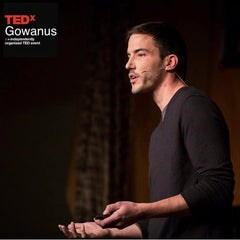 I’m extremely proud of what I’ve accomplished. We’ve sold thousands of cutting boards around the world, there was the TEDxGowanus talk, the Mount Gay Rum campaign, and lots of press too. All from someone who pretty much figured out the woodworking stuff as he went along and just tried to add more value to the basic cutting board through better design. Also, for all the boards we made, there were never more than three of us making them, and usually only one or two. The production processes were well designed. I'm proud of the branding too - folks love the aluminum tags. There were plenty of missteps, but overall, as frustrating as some parts were, it was great.
I’m extremely proud of what I’ve accomplished. We’ve sold thousands of cutting boards around the world, there was the TEDxGowanus talk, the Mount Gay Rum campaign, and lots of press too. All from someone who pretty much figured out the woodworking stuff as he went along and just tried to add more value to the basic cutting board through better design. Also, for all the boards we made, there were never more than three of us making them, and usually only one or two. The production processes were well designed. I'm proud of the branding too - folks love the aluminum tags. There were plenty of missteps, but overall, as frustrating as some parts were, it was great.
I’m not sure what’s next, but I know it needs to be something in the spirit of what I had with Gowanus Furniture Co. and uses what I’ve learned. Something small, with an all-hands-on-deck sort of feel, and something that’s all about new ideas and solving problems (but ideally with less sawdust). In the meantime, I’m thrilled that my “Excel for Creatives” class is finally happening, and I can finally work on all the personal woodworking projects that have been on hold. I’m also looking forward to unveiling the “DIY Stereo Tube Amplifier” class in the spring. To all my customers, thank you for all the support over the years, I do hope to get Gowanus Furniture Co. cutting boards out to a wider audience in the future.
Want to know more? Connect with me on LinkedIn, or download my resume.

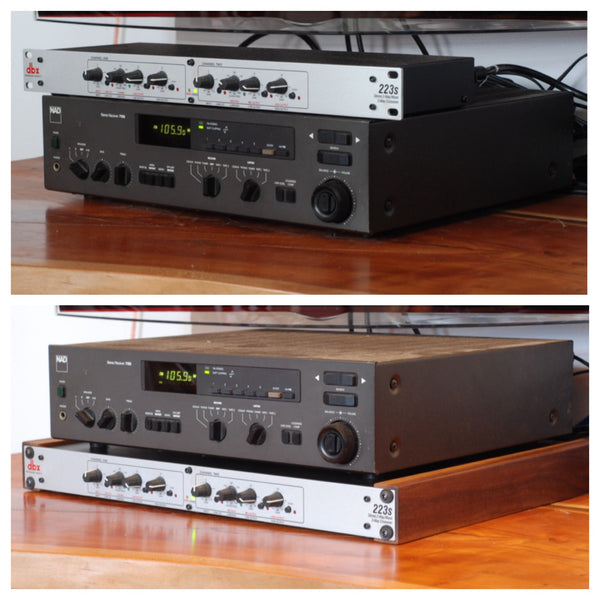





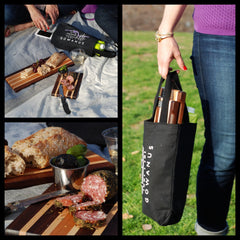 We'll have a few new combos coming up - great for gifts, or just to get a sweet deal for yourself.
We'll have a few new combos coming up - great for gifts, or just to get a sweet deal for yourself.